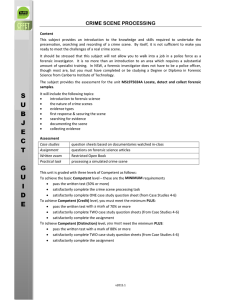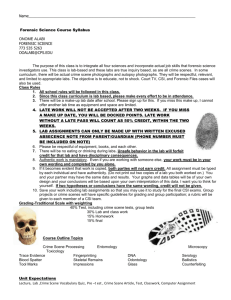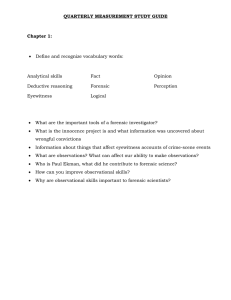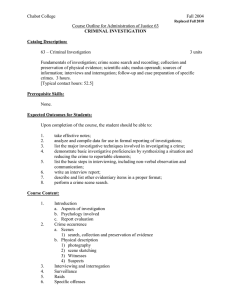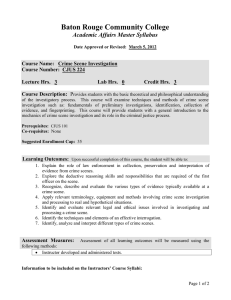Forensics Crime Scene Investigation Notes
advertisement
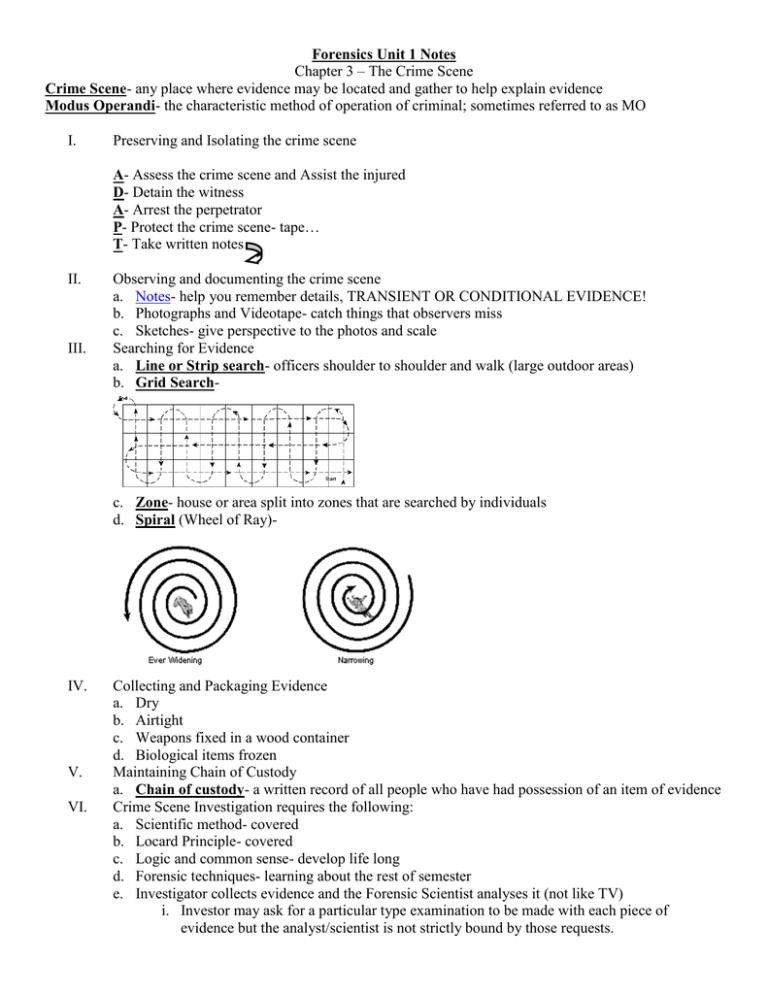
Forensics Unit 1 Notes Chapter 3 – The Crime Scene Crime Scene- any place where evidence may be located and gather to help explain evidence Modus Operandi- the characteristic method of operation of criminal; sometimes referred to as MO I. Preserving and Isolating the crime scene A- Assess the crime scene and Assist the injured D- Detain the witness A- Arrest the perpetrator P- Protect the crime scene- tape… T- Take written notes II. III. Observing and documenting the crime scene a. Notes- help you remember details, TRANSIENT OR CONDITIONAL EVIDENCE! b. Photographs and Videotape- catch things that observers miss c. Sketches- give perspective to the photos and scale Searching for Evidence a. Line or Strip search- officers shoulder to shoulder and walk (large outdoor areas) b. Grid Search- c. Zone- house or area split into zones that are searched by individuals d. Spiral (Wheel of Ray)- IV. V. VI. Collecting and Packaging Evidence a. Dry b. Airtight c. Weapons fixed in a wood container d. Biological items frozen Maintaining Chain of Custody a. Chain of custody- a written record of all people who have had possession of an item of evidence Crime Scene Investigation requires the following: a. Scientific method- covered b. Locard Principle- covered c. Logic and common sense- develop life long d. Forensic techniques- learning about the rest of semester e. Investigator collects evidence and the Forensic Scientist analyses it (not like TV) i. Investor may ask for a particular type examination to be made with each piece of evidence but the analyst/scientist is not strictly bound by those requests.






